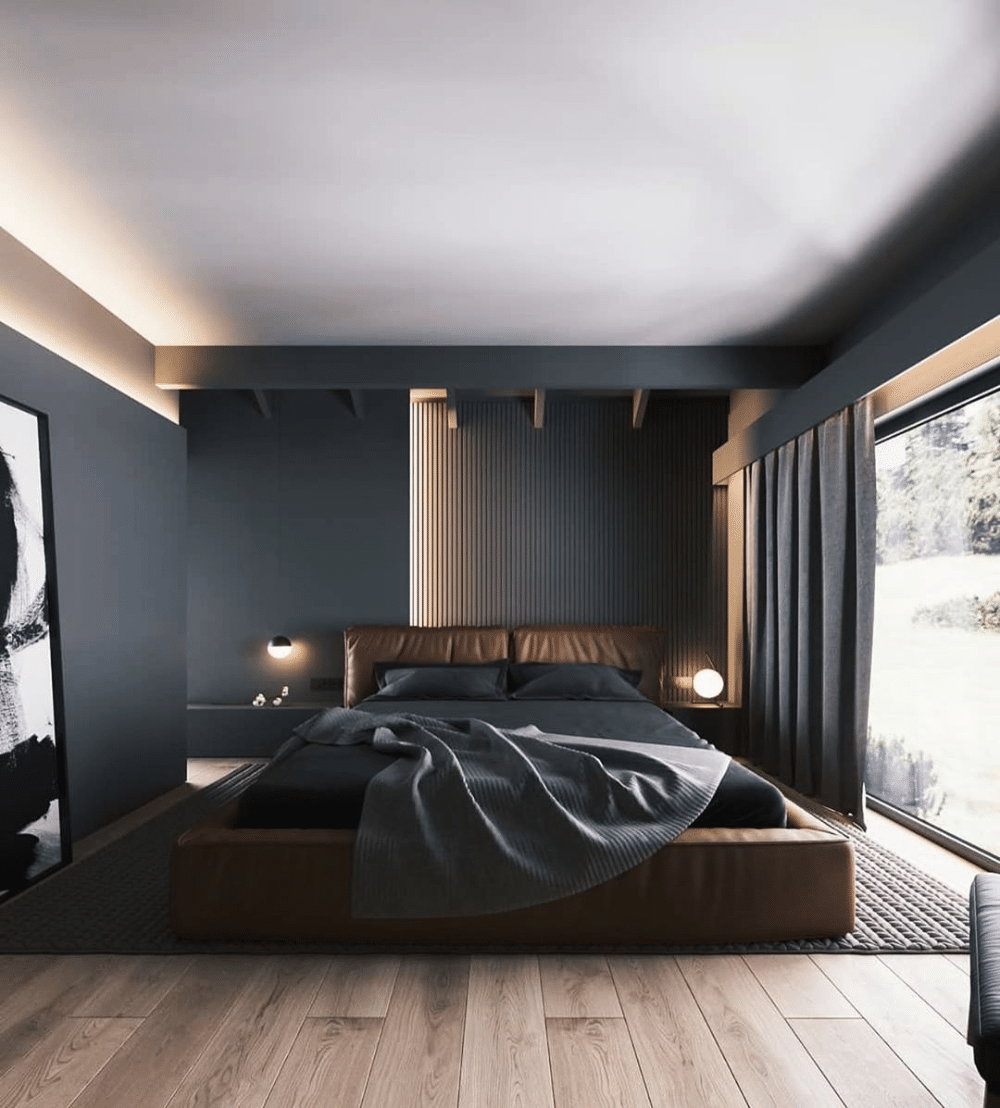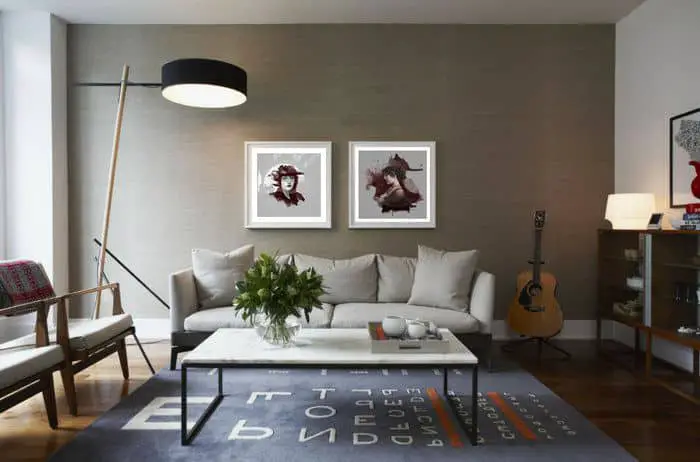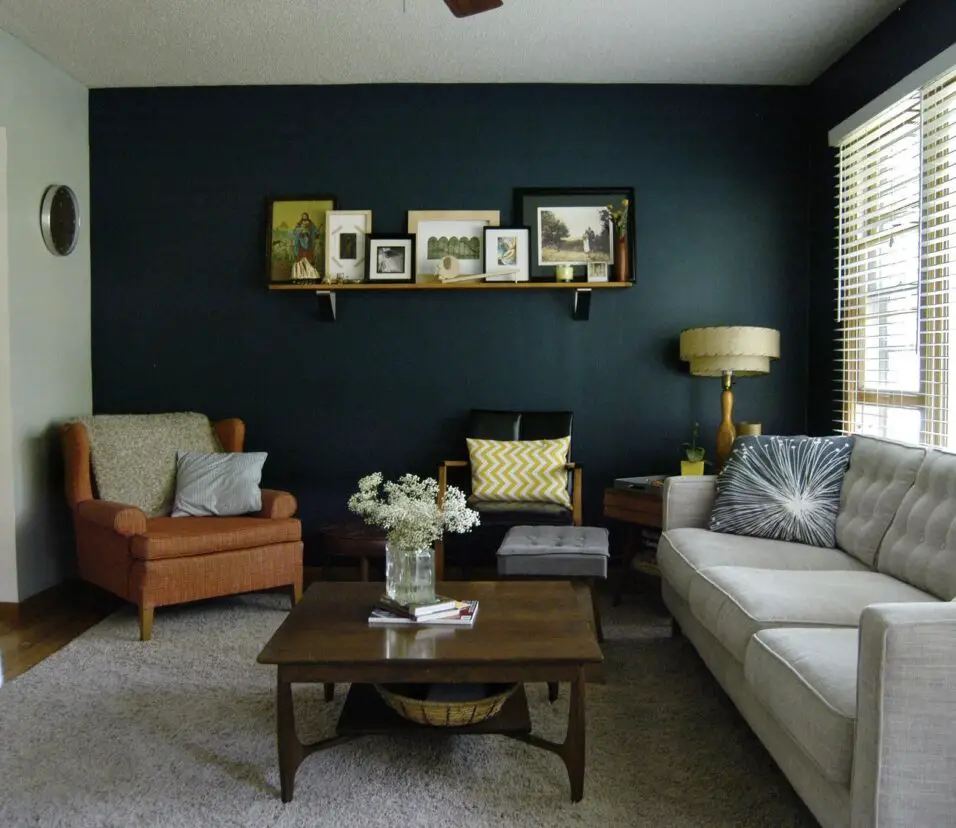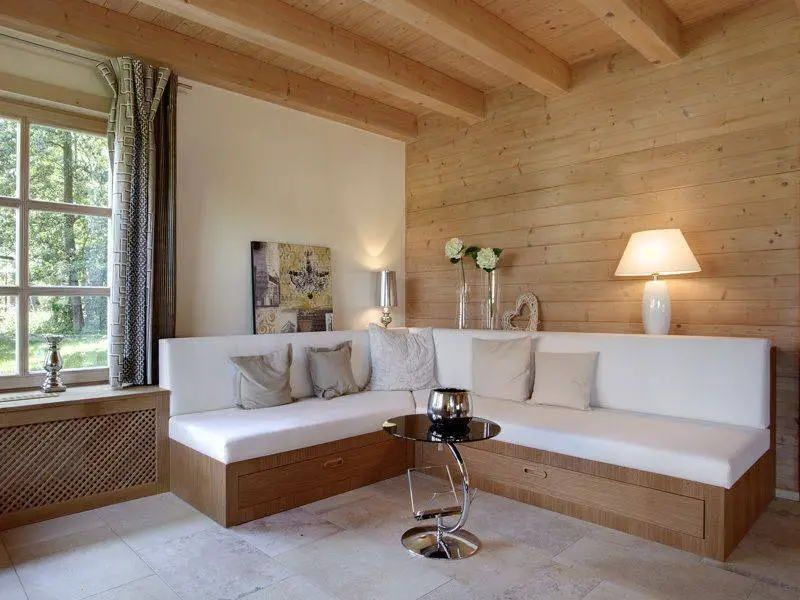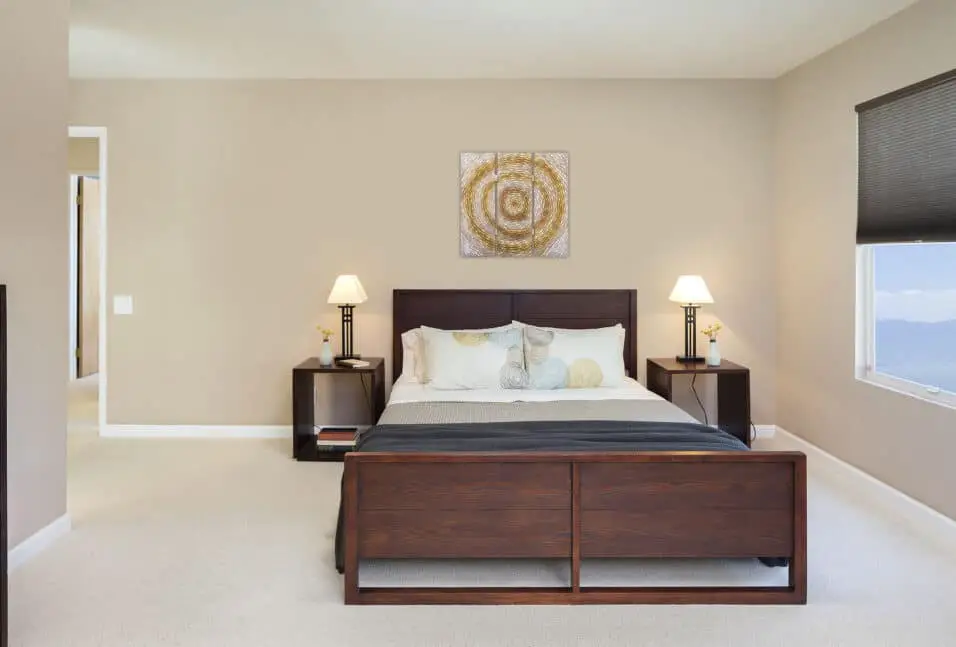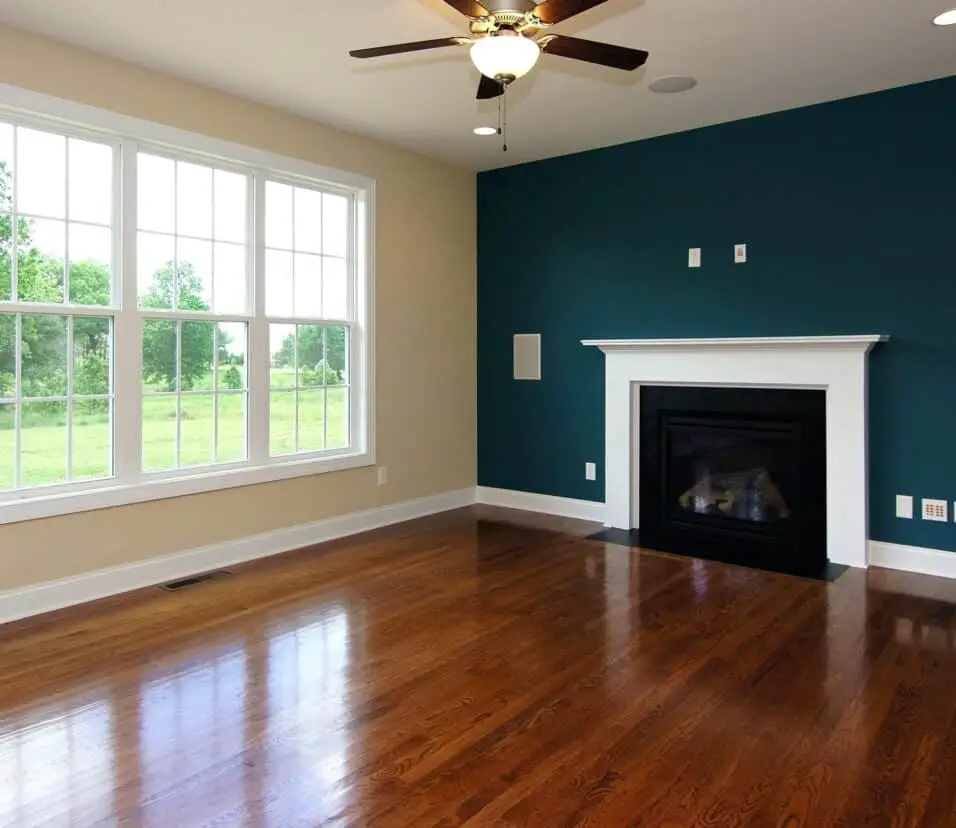Where To Put Accent Wall
Introduction
Where To Put Accent Wall: Choosing to add an accent wall to your home is a fantastic way to inject personality and style into your living space. Whether you want to create a focal point, add depth, or simply enhance the overall aesthetic appeal of a room, an accent wall can make a significant impact. However, deciding where to place this eye-catching feature requires careful consideration and planning. In this article, we will explore various factors to consider when determining the perfect location for an accent wall.
An accent wall can be an excellent way to highlight and showcase the unique architectural features of a room. If you have a stunning fireplace, a beautiful window, or an interesting alcove, consider placing the accent wall in close proximity to these features. By doing so, you can draw attention to these architectural elements and create a cohesive and visually appealing space. The color and pattern of your accent wall play a crucial role in determining its impact on the room.
Bold and vibrant colors can create a dramatic effect, while softer and more neutral tones can provide a subtle touch of elegance. Consider the overall color scheme of the room and choose a color that complements or contrasts with the existing palette. Similarly, the pattern of the accent wall can add depth and texture to the space. Whether you opt for a geometric design, a floral pattern, or a textured wallpaper, ensure that it enhances the overall aesthetic appeal of the room.
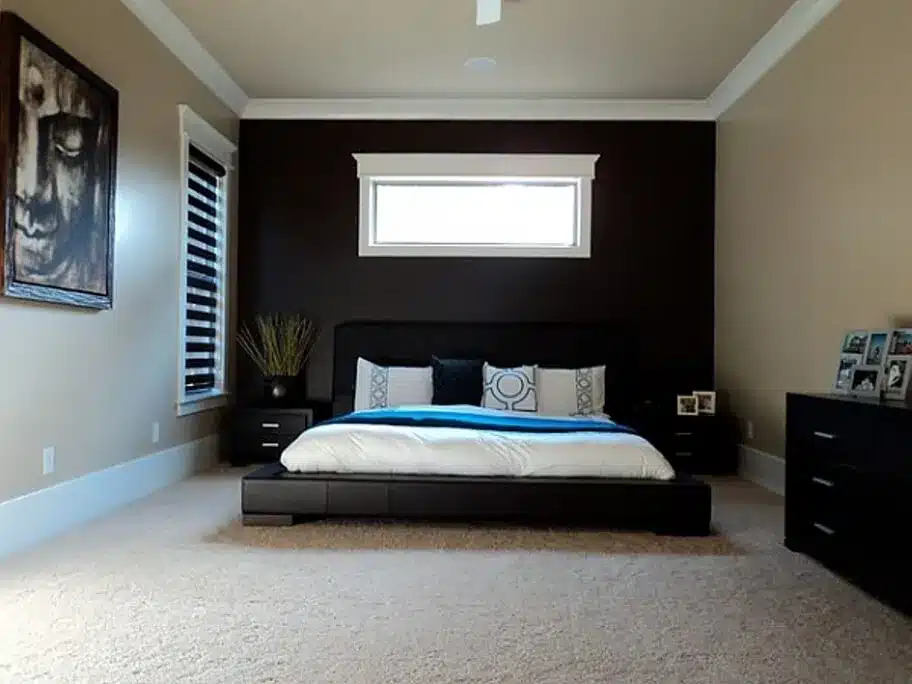
Which wall should be accent wall?
In general, the right wall to accent is usually the first one that you see when you enter a room. You and your guests will always have it in view. 2. Look for other architectural clues, such as a fireplace, built-in bookcases, or architectural nooks.
When it comes to interior design, choosing an accent walls can greatly enhance the overall aesthetic appeal of a room. An accent walls is a focal point that stands out from the rest of the walls in a space, adding visual interest and creating a sense of depth. It serves as a canvas for showcasing artwork, highlighting architectural features, or simply adding a pop of color or texture to the room. However, deciding which walls should be the accent wall requires careful consideration of various factors.
Factors to Consider:
One of the key factors to consider when choosing an accent wall is the room’s layout and architecture. The wall that naturally draws attention or serves as a backdrop for a significant element, such as a fireplace or a large window, is often an ideal choice for an accent wall. This wall can help emphasize the room’s focal point and create a harmonious balance within the space.
Another important consideration is the color scheme and overall design concept of the room. The accent walls should complement the existing color palette and style, while also adding a touch of contrast or drama. For instance, in a room with neutral tones, a bold and vibrant accent walls can inject energy and personality into the space. On the other hand, if the room already features a strong color scheme, a subtler accent walls with a complementary shade or texture can provide a more balanced look.
Practicality and Functionality:
Practicality and functionality are also crucial factors to take into account. If the room has architectural flaws or imperfections, such as uneven surfaces or exposed pipes, an accent walls can help divert attention away from these elements. Additionally, considering the room’s purpose and function is essential. For example, in a bedroom, the walls behind the headboard is often chosen as the accent walls to create a cozy and inviting atmosphere.
Choosing the right accent walls can significantly enhance the overall design and ambiance of a room. By considering factors such as the room’s layout, color scheme, and functionality, one can make an informed decision. Whether it’s adding a splash of color, highlighting architectural features, or creating a focal point, an accent walls can transform a space into a visually captivating and harmonious environment.
What is the rule for accent walls?
Go with a color that is darker than the other walls in the room. A darker hue will contrast with the lighter walls and pull eyes straight to it, which is what you want. A good rule of thumb is to paint the accent wall the same color as the other walls, but 2 shades darker.
An accent wall is a common interior design approach that paints or decorates one wall differently. This technique adds visual intrigue, a focal point, and aesthetic appeal to a place. Based on the room’s style and desired effect, accent walls can be made of various materials, colors, patterns, and textures.
The rule for accent walls
One of the main rules for accent walls is to choose the right walls to highlight. Typically, the walls that is directly opposite the entrance or the walls behind the main furniture piece, such as a bed or a sofa, is selected as the accent wall. This placement ensures that the accent walls immediately catches the attention of anyone entering the room and becomes the focal point of the space. It also helps to create a sense of balance and harmony within the room.
There are some tips for choosing accent wall colors. The colour should match the room’s scheme and contrast with the other walls. Choose a darker or brighter shade of the same hue or a different color that matches the palette to create this contrast. Accent walls can be painted in bright colors for a dramatic effect or in muted tones for a more sophisticated aesthetic.
Where not to put an accent wall?
So avoid putting an accent wall in a small, enclosed space. Additionally, avoid accent walls in rooms with little natural light. In these situations, an accent wall will break up the room and make it feel small.
An accent wall is a popular design trend that involves painting or decorating one wall in a room to create a focal point or add visual interest. While accent walls can be a great way to enhance the aesthetics of a space, it is important to consider where not to put an accent wall. This article will discuss some key factors to keep in mind when deciding on the placement of an accent wall.
Location and Purpose:
When choosing where to put an accent wall, it is crucial to consider the purpose of the room and its layout. In general, it is not recommended to put an accent wall in a small room as it can make the space feel even smaller and more cramped. Instead, opt for larger rooms where the accent wall can create a sense of depth and dimension.
Complementary Colors:
Another important factor to consider is the color scheme of the room. The accent wall should complement the existing colors and decor in the space. It is advisable to choose a color that contrasts with the other walls, furniture, and accessories in the room. This will help create a visually appealing and cohesive look.
Architectural Features:
It is essential to take into account the architectural features of the room when deciding on the placement of an accent wall. Avoid putting an accent wall on a wall that already has prominent architectural details, such as a fireplace, large windows, or intricate moldings. These features are already eye-catching and adding an accent wall may create a visual overload.
Functionality:
Lastly, consider the functionality of the room before deciding on the placement of an accent walls. For example, in a bedroom, it is not recommended to put an accent wall behind the headboard as it may distract from the focal point of the room. Instead, consider placing the accent walls on a walls opposite the bed to create a balanced and harmonious look.
When deciding where not to put an accent wall, it is important to consider the size of the room, the color scheme, the existing architectural features, and the functionality of the space. By carefully evaluating these factors, you can ensure that the accent wall enhances the overall aesthetics of the room without overwhelming or detracting from its design.
What is the use of accent wall in living room?
Accent walls can not only instantly transform a room, but they can change the vibe of your whole house. It sounds like it would throw your symmetry off balance, but it simply adds a touch of dimension, intrigue, and style.
An accent wall in a living room is a popular design choice that can add visual interest and enhance the overall aesthetic appeal of the space. It is a wall that is different from the other walls in terms of color, texture, or pattern, and is strategically placed to create a focal point in the room. The use of an accent wall can transform a plain and ordinary living room into a stylish and dynamic space.
One of the main purposes of an accent wall in a living room is to create a sense of depth and dimension. By choosing a different color or texture for the accent wall, it can visually separate the wall from the rest of the room, making it stand out and draw attention. This can be particularly effective in smaller living rooms, as it can make the space appear larger and more spacious.
Living room
In addition to adding depth, an accent wall can also serve as a backdrop for showcasing artwork, photographs, or other decorative elements. By choosing a neutral or complementary color for the other walls in the room, the accent wall can provide a striking contrast that highlights the displayed items. This can create a visually appealing and curated look, adding personality and character to the living room.
The use of an accent wall in a living room serves multiple purposes. It adds depth and dimension, provides a backdrop for showcasing artwork, emphasizes architectural features, and offers a cost-effective way to update the space. By carefully selecting the color, texture, or pattern for the accent wall, homeowners can create a visually appealing and stylish living room that reflects their personal taste and style.
What is the reason for an accent wall?
An accent wall draws attention to a neglected area or adds decorative flair to a room. Accent walls bring interest to your home’s design and can connect a color scheme together.
An accent wall is a popular design trend that involves painting or decorating one wall in a room differently from the other walls. This wall is typically chosen for its unique features, such as its size, shape, or architectural details. The purpose of an accent wall is to create a focal point in the room and add visual interest to the space. It serves as a way to break up the monotony of a single color or pattern throughout the entire room, and instead, adds depth and dimension to the overall design.
One of the main reasons for incorporating an accent wall into a room’s design is to create a sense of balance and harmony. By choosing a wall to highlight, it helps to create a visual anchor that grounds the space and brings all the elements together. This can be especially beneficial in larger rooms or open floor plans, where there may be a lot of empty wall space that needs to be filled. The accent wall acts as a focal point that draws the eye and gives the room a cohesive look.
Reason for an accent wall
Another reason for using an accent wall is to highlight a specific feature or area in the room. For example, if there is a fireplace, a large window, or a piece of artwork that you want to showcase, painting the wall behind it in a contrasting color or adding a unique wallpaper can help to draw attention to that particular element. This can create a sense of drama and make the room feel more dynamic and visually appealing.
In addition to creating visual interest, an accent wall can also serve a practical purpose. For instance, if you have a long, narrow room, painting one of the shorter walls in a darker color can help to visually shorten the space and make it feel more proportionate. On the other hand, if you have a small room, painting one wall in a lighter color can help to create the illusion of a larger space. By strategically choosing the location and color of the accent wall, you can manipulate the perception of the room’s size and shape.
Overall, the reason for an accent wall is to enhance the overall aesthetic of a room and create a visually appealing space. Whether it’s to add depth and dimension, highlight a specific feature, or create balance and harmony, an accent wall can transform a room from ordinary to extraordinary. By carefully selecting the location, color, and design of the accent wall, you can achieve a stunning and personalized look that reflects your style and personality.
Benefit of an accent wall
An accent wall can bring numerous benefits to a room, transforming its overall look and feel. One of the primary advantages is that it adds visual interest and depth to the space. By using a different color, texture, or pattern on one wall, you create a focal point that draws attention and creates a sense of intrigue. This can be particularly effective in rooms that lack architectural features or have a monotonous color scheme.
Another benefit of an accent wall is that it allows you to experiment with bold or vibrant colors that you might be hesitant to use on all the walls. It provides an opportunity to introduce a pop of color or a unique design element without overwhelming the entire room. This can be especially useful in smaller spaces where you want to make a statement without overpowering the area.
Furthermore, an accent wall can help define different zones within a room. For example, in an open-concept living and dining area, a strategically placed accent wall can visually separate the two spaces, creating a sense of distinction and organization. It can also be used to highlight specific architectural features, such as a fireplace or a built-in shelving unit, adding emphasis and enhancing the overall aesthetic appeal of the room.
How can the placement of an accent wall enhance the overall aesthetic of a space?
The placement of an accent wall can significantly enhance the overall aesthetic of a space by adding visual interest, depth, and personality to a room. By strategically selecting a wall to highlight, you can create a focal point that draws attention and creates a sense of balance and harmony within the space. The use of bold colors, patterns, or textures on the accent wall can create a striking contrast against the surrounding walls, instantly transforming the room’s atmosphere.
One of the key benefits of an accent wall is its ability to define and emphasize certain architectural features or design elements within a room. For example, if you have a fireplace or a unique architectural detail, placing an accent wall behind it can help showcase and highlight its presence. This not only adds visual appeal but also creates a sense of cohesion and purpose to the overall design scheme.
When deciding where to place an accent wall, it is essential to consider the room’s layout and function. For instance, in a living room, placing the accent wall behind the sofa can create a sense of depth and make the seating area more inviting. In a bedroom, the accent wall can be positioned behind the headboard to create a focal point and add a touch of luxury. By carefully considering the room’s purpose and the desired effect, you can ensure that the placement of the accent wall enhances the overall aesthetic and functionality of the space.
What factors should be considered when deciding where to put an accent wall?
When deciding where to put an accent wall, several factors should be taken into consideration to ensure the desired impact and aesthetic appeal. Firstly, it is important to assess the room’s layout and architectural features. Consider the natural focal points of the space, such as a fireplace, large window, or a unique architectural element. Placing an accent wall near these focal points can draw attention to them and create a visually striking effect.
Another crucial factor to consider is the color scheme and overall design theme of the room. The accent wall should complement the existing colors and patterns in the space. It can either harmonize with the surrounding walls or provide a contrasting element to create visual interest. Additionally, the size and scale of the room should be taken into account. In smaller spaces, an accent wall can make the room feel more intimate, while in larger rooms, it can help define different areas or zones.
The room’s purpose and function should also affect accent wall placement. In a bedroom, the accent wall might be placed below the headboard to create a focal point and warmth. To improve viewing, place the accent wall behind the TV or entertainment center in a living room. By considering these elements, one can strategically position an accent wall to enhance its impact and improve room functionality and flow.
Are there any specific guidelines or design principles to follow when determining the location of an accent wall?
Several design rules might help you choose a good accent wall location. First, determine the room’s main point. The accent wall should capture attention and enhance the space’s appeal. To generate visual interest, place this behind a bed in a bedroom, sofa in a living area, or hallway.
Accent wall color and design are also important. A color that matches the room’s scheme is preferable. A contrasting color provides depth and dimension, or a complementary color matches the walls. The accent wall pattern or texture should also be chosen carefully to add visual interest without overwhelming the space.
The size and scale of the room should also be considered when placing an accent wall. To prevent cramping smaller rooms, consider a wall that is not overly dominant. However, a larger accent wall can create a focal point and aesthetic effect in larger areas.
How can the placement of an accent wall contribute to the functionality and flow of a room?
The placement of an accent wall in a room can greatly contribute to its functionality and flow. By strategically selecting the location of the accent wall, you can create a focal point that enhances the overall design and purpose of the space. One way an accent wall can improve functionality is by defining different areas within a room. For example, in an open-concept living and dining area, placing an accent wall between the two spaces can visually separate them, creating distinct zones for different activities.
In addition to defining areas, the placement of an accent wall can also improve the flow of a room. By carefully selecting the wall’s location, you can guide the eye and create a natural progression throughout the space. For instance, if you want to draw attention to a specific architectural feature or a stunning piece of artwork, placing an accent wall behind it can help direct focus and create a harmonious flow from one point of interest to another.
Furthermore, the placement of an accent wall can also contribute to the functionality of a room by serving practical purposes. For instance, if you have a wall that is prone to scuffs or marks, such as the one behind a dining table or a workspace, using it as an accent wall can help conceal imperfections while adding visual interest. Additionally, an accent wall can be utilized to incorporate storage solutions, such as built-in shelves or cabinets, which can enhance the functionality of the room by providing extra space for organization and display.
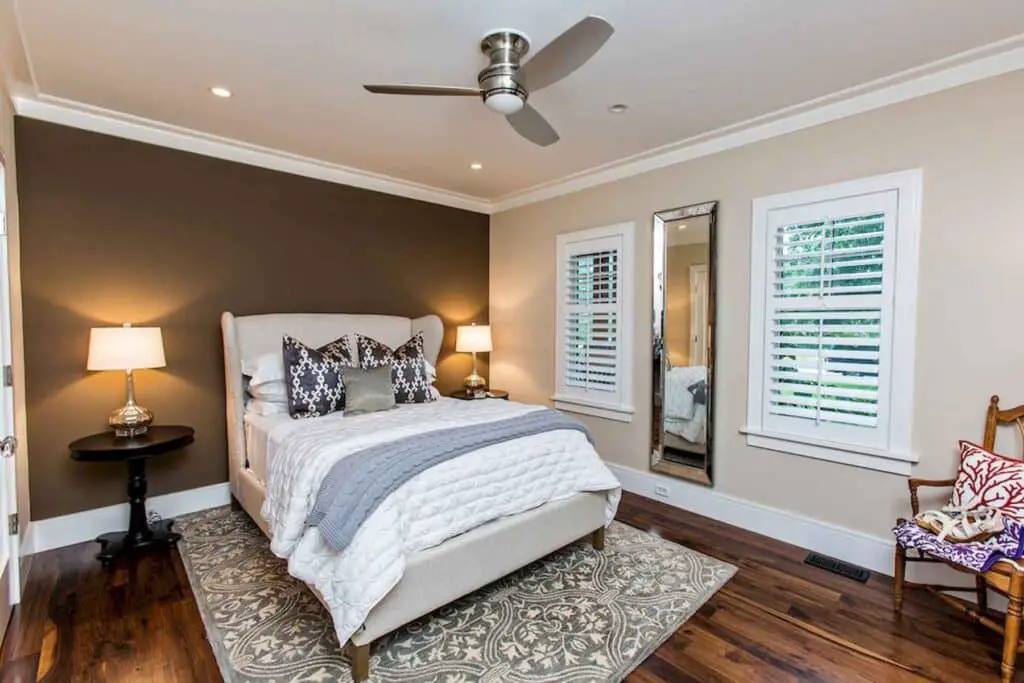
Conclusion
After analyzing the keyword “”where to put accent wall,”” it is clear that there is a significant interest in this topic. People are seeking guidance and ideas on how to effectively incorporate accent walls into their living spaces. Throughout this analysis, we have explored various factors that can influence the decision-making process when it comes to placing an accent wall. One key takeaway from this analysis is the importance of considering the purpose and function of the room. Different rooms serve different purposes, and the placement of an accent wall should align with the overall design and functionality of the space. For example, in a living room, an accent wall behind the television or fireplace can create a focal point and enhance the visual appeal of the room. On the other hand, in a bedroom, an accent wall behind the bed can add depth and create a cozy atmosphere.
Another crucial aspect to consider is the color and pattern of the accent wall. The choice of color can greatly impact the overall ambiance of the room. Bold and vibrant colors can make a statement and add energy, while softer and more neutral tones can create a calming and soothing effect. Additionally, patterns can be used to add visual interest and texture to the accent wall, further enhancing its impact on the room’s design.
It is important to take into account the existing architectural features and layout of the living room. These factors can influence the placement of an accent wall and determine how it interacts with the surrounding elements. For instance, if there are windows or doors on a particular wall, it may be more suitable to choose a different wall as the accent wall to avoid visual clutter.



